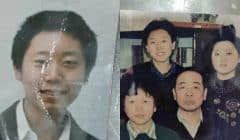The New York Times Spreads Falsehoods about Falun Gong in Attack on Rival Media

On the front page of today’s New York Times (Sunday edition) is an article entitled “How an Obscure Newspaper…” This article propagates false narratives and inaccuracies about Falun Gong, as well as a striking trivialization of the nature and scale of human rights abuses faced by Falun Gong practitioners in China.
At a time when millions of innocent Falun Gong believers in China—who have no connection with the U.S. media and political landscape —continue to face abduction, torture, and extrajudicial killing at the hands of the Chinese Communist Party (CCP), these problems constitute a gross negligence, or perhaps even mal-intent, on the part of the New York Times.
“We are saddened to see the New York Times malign Falun Gong in an attack on a rival media outlet. The mistakes made in this article about the Buddhist-based spiritual practice as well as the significant omissions surrounding the persecution in China signal a bizarre and troubling downturn of what was once a pillar of American journalism,” says Falun Dafa Information Center Executive Director, Levi Browde.
“The problematic reporting in this article is sadly, not an anomaly. Rather, it comes in the context of a 20-year-long near complete silence by the New York Times on terrible human rights abuses ongoing in China against ordinary Chinese who practice Falun Gong, despite reporting on other persecuted religious groups in China and elsewhere” says Browde. Indeed, at least one former reporter from the New York Times has publicly stated that she was discouraged from investigating evidence of forced organ removals from Falun Gong prisoners of conscience.
Suspicious Silence Amid Terrible Atrocities
The New York Times article reduces the sum-total of human rights abuses faced by Falun Gong in China as mere accusations made by Falun Gong and Falun Gong alone: “The group… accuses [the CCP] of torturing Falun Gong practitioners and harvesting the organs of those executed.” A parenthetical reference notes that tens of thousands of practitioners were sent to labor camps “in the early years” implying that few Falun Gong practitioners in China face life and death persecution today.
This depiction could not be further from the truth. Freedom House estimates seven to 20 million people in China continue to practice Falun Gong today. Not only has the Falun Dafa Information Center documented and reported on thousands of illegal abductions, long sentences, torture, and deaths in custody during 2020 alone, but Chinese government websites indicate a new campaign to “zero out” Falun Gong in towns and villages across the country.
And just as importantly, it is not Falun Gong sources alone that have documented the extreme violence meted out to peaceful believers in China. For 20 years, millions of people have been harassed, detained, imprisoned, tortured or killed by Chinese authorities, a fact that has been regularly documented in annual reports by the United Nations, Amnesty International, Freedom House, and the U.S. Department of State, among others.
Here is a small sampling of these reports to note:
- The UN Special Rapporteur on Torture, Manfred Nowak, reported in 2007 that “Falun Gong practitioners accounted for 66 percent of victims of alleged torture while in government custody.”
- In 2016, the U.S. House of Representatives unanimously passed House Resolution 343, “expressing concern regarding persistent and credible reports of systematic, state-sanctioned organ harvesting” from Falun Gong practitioners in “large numbers.” The text of the resolution noted that “in many detention facilities and labor camps, Falun Gong prisoners of conscience comprise the majority of the population, and have been said to receive the longest sentences and the worst treatment.”
- A 2017 Freedom House report that included a comprehensive chapter on Falun Gong found that despite the CCP’s 17-year campaign to eradicate the group, millions continue to practice. It noted that “Falun Gong practitioners across China are subject to widespread surveillance, arbitrary detention, imprisonment, and torture, and they are at a high risk of extrajudicial execution,” and reported independently verifying 933 cases of practitioners sentenced to prison terms of up to 12 years, noting that this was only a portion of those detained and “thousand more are believed to be held at various prisons and extralegal detention centers.”
- Amnesty International’s 2017/18 report stated, “Falun Gong practitioners continued to be subjected to persecution, arbitrary detention, unfair trials and torture and other ill-treatment.” In 2013, the rights group published a detailed report that thoroughly documented not only the torture of Falun Gong detainees in the labor camp system but also the large-scale diversion of those who refused to renounce their beliefs to judicially-run prisons and extralegal detention facilities when the labor camp network was abolished.
On the topic of organ harvesting, the reality of Falun Gong practitioners being killed for their organs in China is now widely accepted among human rights organizations, policy makers, and academic circles. In 2019, Sir Geoffrey Nice QC, a former prosecutor at the International Criminal Tribunal for the former Yugoslavia, who led the prosecution of Slobodan Milosevic, convened an independent tribunal of medical, legal, and China experts in London. After assessing all the evidence, the panel concluded that Falun Gong practitioners were and continue to be killed for their organs “on a significant scale.” This story was covered by the BBC, Forbes, The Guardian, Newsweek, The Telegraph, The Wall Street Journal, and NBC.
The New York Times failed to report on this story.
All this begs the question: in the face of such extensive documentation by human rights organizations, democratic governments in the West, the United Nations, and many of other media outlets, in this article why would the New York Times characterize the entirety of the evidence as “The group… accuses”? Is the New York Times reticent to tell the full story about the persecution of Falun Gong, and if so, why?
Perhaps, it has something to do with the meeting between New York Times publisher, Arthur Sulzberger Jr., and former CCP leader Jiang Zemin (who single-handedly started the persecution of Falun Gong) back in 2001? After this meeting, there was no meaningful reportage about the Falun Gong persecution for the next 20 years (with one notable exception: the work of Andrew Jacobs).

Regardless of the reason, it is, ironically, one of the New York Times’ own that gives one of the most direct testaments to the silence.
Former New York Times Beijing correspondent Didi Kirsten Tatlow’s testimony to the China Tribunal suggests not only that forced organ harvesting from prisoners of conscience did take place in China, and that it was an open secret among transplant surgeons, but notably, that the New York Times actively discouraged her from reporting on this fact.
Blatant Falsehoods
This New York Times article also carries blatant falsehoods about the Falun Gong teachings and beliefs.
For example, the article propagates the idea that Falun Gong “forbids interracial marriage.” Yet, even the most casual examination of Falun Gong communities anywhere around the world, including here in New York, demonstrates that interracial marriage, and mixed-race children abound. In fact, the executive director of the Falun Dafa Information Center as well as several members of the volunteer staff at the Center are in interracial marriages, many with children. All practice Falun Gong.
Then, where does this lie come from? In recent years, Chinese embassy websites throughout the West have started to use this phrase to demonize Falun Gong in their English language propaganda because they know it will be triggering in the West.
By including this falsehood in the article, the New York Times demonstrates either a failure to conduct even a basic level of fact-checking, or worse, knowingly included it to strengthen the narrative of the story.
This article also repeats additional CCP propaganda points on Falun Gong, which can be explored further at: https://faluninfo.net/misconceptions/.
Implying Thuggery or Worse
There were more subtle, yet no less misleading, statements made in this New York Times article as well.
When characterizing some of his sources, the author indicates that they spoke anonymously because they “feared retaliation…[from] Falun Gong.” The article presents no evidence or credence for this ‘fear,’ but its connotation of violence is the polar opposite of the peaceful nature of the practice, and the manner in which Falun Gong believers conduct themselves.
Furthermore, there is an abundance of notable figures who have actually come to know the Falun Gong community well and can testify that such a sentiment is groundless.
David Kilgour, former Canadian Secretary of State (Asia Pacific) describes Falun Gong as: “wonderfully sweet, kind people without a vicious bone in their body.”
Professor Arthur Waldron, Lauder Professor of International Relations in the Department of History at the University of Pennsylvania, has said Falun Gong: “are outstanding people by any standard: intelligent, well-educated, hard-working, moral in their behavior, courageous.”
In fact, for more than 20 years, millions of people across China have faced terrible violence and oppression, and there’s not a single known case of a Falun Gong practitioner raising their hands in retaliation against their oppressor. By contrast, in a recent case reported by the Falun Dafa Information Center, a Falun Gong practitioner came to the aid of his sister who was the victim of domestic violence. Instead of arresting the abuser, the Chinese police detained the protector and sentenced him to seven years in prison because of his faith.
But again, none of this context is included and readers are left to consider Falun Gong as a group prone to “retaliation.” – a notion that is highly misleading, at best.
Political Prejudice
The attempts of the New York Times to ascribe a specific political profile to Falun Gong as a whole is off the mark.
The Falun Gong community as well as Falun Gong’s founder, Mr. Li Hongzhi, have no political ties in the U.S. or elsewhere. In fact, Mr. Li has repeatedly called upon Falun Gong practitioners to not involve the practice in politics. Of course, individuals within the Falun Gong community hold their own beliefs that span the political spectrum, from the very liberal to the very conservative, and everything in between. However, the community of practitioners does not involve itself, as a group or community, in politics, nor support any given politician.
Furthermore, if you look at the support Falun Gong has received, particularly in the United States, it is clear Falun Gong remains entirely a non-partisan issue, as it should be.
Looking at U.S. Congressional resolutions supporting Falun Gong and denouncing the persecution in China (there have been five in total), the co-sponsor list is bi-partisan.
House Resolution 343 was cosponsored by 83 Democrats and 102 Republicans. House Resolution 605 was cosponsored by 40 Democrats and 41 Republicans. And finally, House Concurrent Resolution 188 was cosponsored by 62 Democrats and 37 Republicans.
This past July, a bi-partisan initiative featuring letters from 18 Republicans and 16 Democrats in Congress expressed solidarity with Falun Gong practitioners and condemned the Chinese regime for its “egregious crackdown on Falun Gong practitioners.”
“We are not privy to the inner-workings of the Epoch Times, and so cannot comment on those points made in this article,” says Browde. “However, given the falsehoods propagated about Falun Gong, it is reasonable to question the objectivity, if not the integrity, of the article as a whole.”
The Falun Dafa Information Center implores the New York Times to remove whatever policies, influences and/or biases currently in place that are preventing fair and accurate reporting on Falun Gong, and get the story, the whole story, right.










